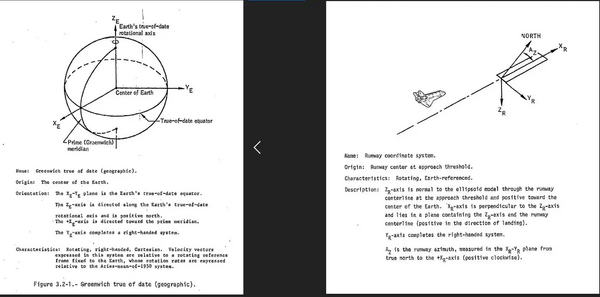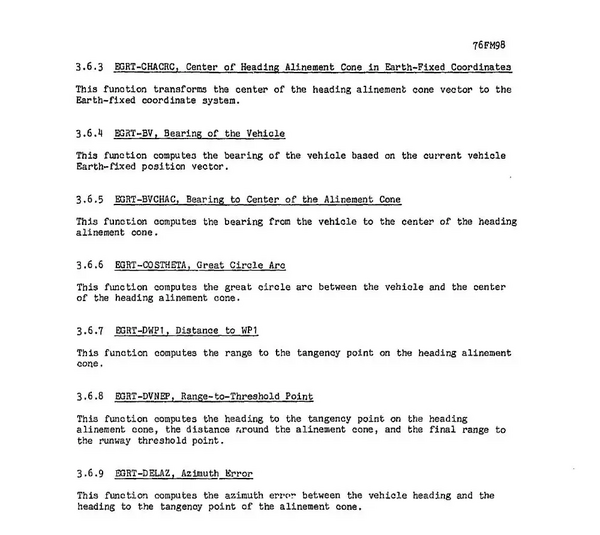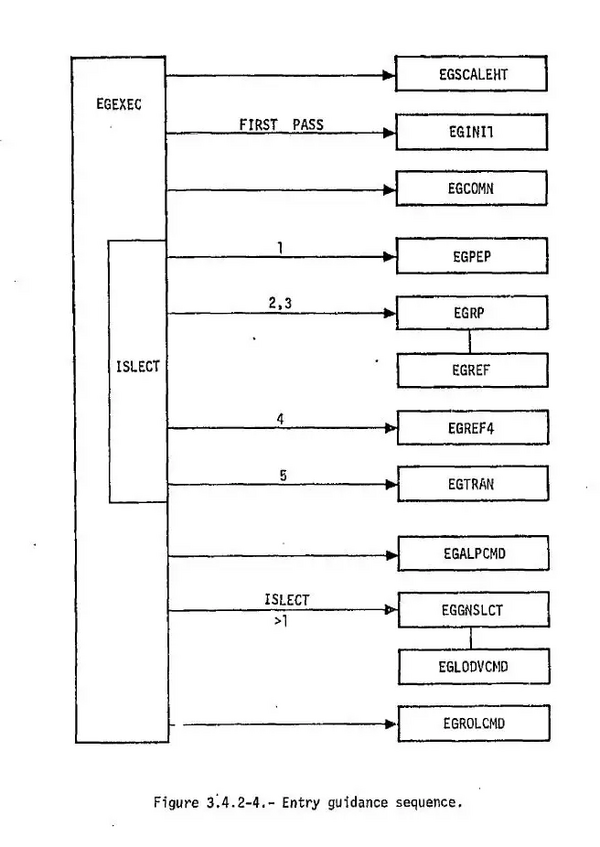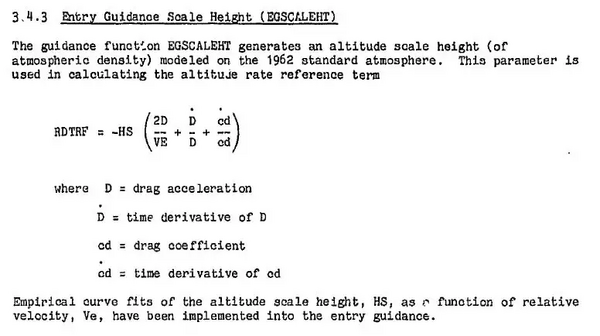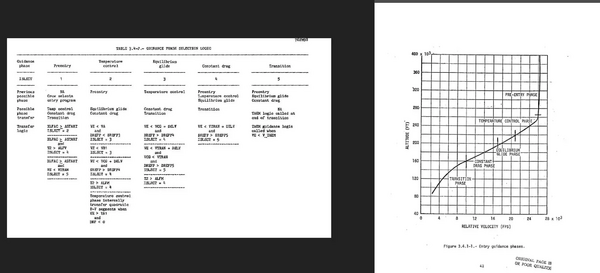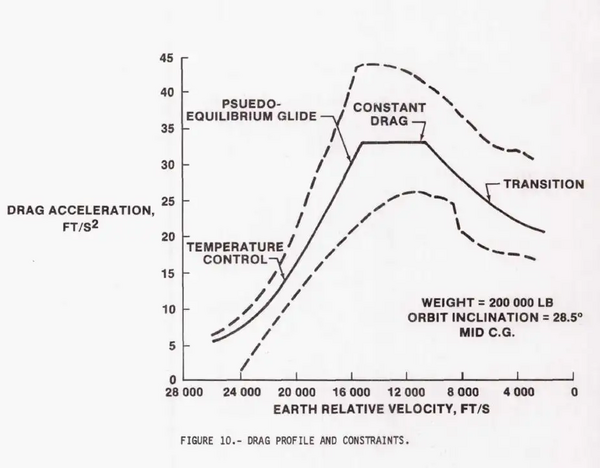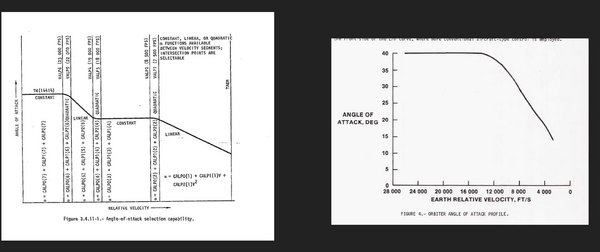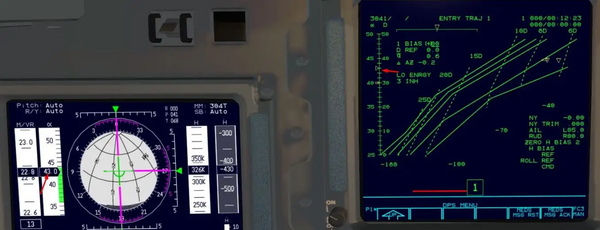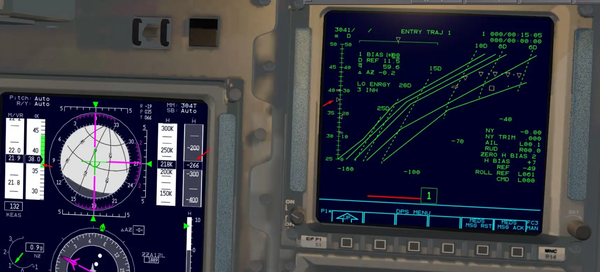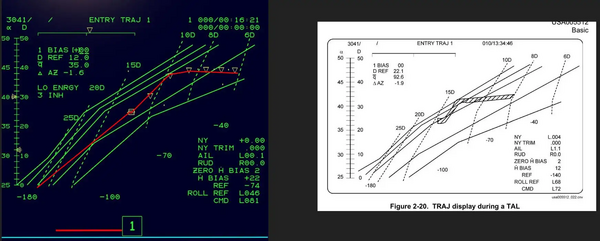Shuttle guidance - Entry guidance algorithm
| Space Shuttle |
|---|
| Main article |
| Technical |
| Checklists |
| Nominal Operations |
| Nominal Operations Advanced Tutorials |
| Intact Aborts |
| The other space shuttle |
A topic speaking about the entry guidance algorithm.
Documentations
I didnt use hyperlinks to avoid NASA ntrs server spam from forum robots
- A quick overview of the Descent guidance from the Space Shuttle Technical Conference: ntrs.nasa.gov/citations/19850008593
- A deeper look into the Entry equations formalism with that paper that you might find under: Shuttle Entry Guidance JSC-14694
- Entry guidance formulation requirements (code): ntrs.nasa.gov/citations/19800016873
All the documentations linked in the Entry/TAEM rework are even more useful now, as almost all the parts of Entry guidance are simulated and displayed parameters fed with consistent datas. https://forum.flightgear.org/viewtopic.php?f=87&t=38777
Overview
A short sum up of the main guidance points explained in the former links
First thing is to convert some Geodetic coordinates into Runway frame coordinates to have an accurate distance to runway threshold through the Heading Alignment Cone; and correct Delta Azimuth to the HAC tangency point.
It is done through a targeting routine that will update at every guidance computation frame (1.92s) some parameters. Main outputs will be Range to Treshold Aimpoint and HAC entry point Azimuth Error.
Then will come the entry guidance sequence. A bunch of functions that will output a Commanded Angle of Attack and a Commanded Bank that will then go to the autoPilot loop.
- EGSCALEHT function generates a constant that will be used to calculate the Reference attitude rate term. It corresponds to the H dot ref term that can be seen in the Entry display
- EGINIT function resets runway dependant parameters to their nominal values in case of Runway Redesignation.
- EGCOMN function calculates parameters that will be used during the whole entry (targeted Drag, Total Energy, Hdot reference for Entry display, etc)
- ISELECT and subsequent functions (EGPEP to EGTRAN) calculate specific parameters depending of the Entry phase.
There are 5 different phases with different transfer logic between them depending of Shuttle Energy (High Energy / Nominal / Low Energy Entries)
IPHASE 1: Preentry opened loop until a drag of 3ft/s² is reached. IPHASE2: Temperature control (aim there is to avoid to burn the Tiles) IPHASE3: Equilibrium glide IPHASE4: Constant Drag (Nominal drag targeted there is 33ft/s² for a smooth deceleration) IPHASE5: Transition (Below 10000 ft/s, transition from high AOA to lower AOA with flight path increasing).
Entry profile is shaped to target an i-loaded constant drag around 16000 ft/s (33ft/s² for a nominal Entry)
Those different phases might also be identified through the Entry display layout:
- EGALPCMD function computes the Angle of Attack to be flown.
Profile that was flown is a 40° AOA until 12000 ft/s ish where the AOA starts to ramp down to reach 15° (Max L/D AOA) at TAEM transition.
- EGLODVCMD calculates the Lift over Drag (L/D) ratio to be flown.
L/D ratio to be flown is based on a reference ratio (L/D zero) which would represent our L/D ratio if we were perfectly on the targeted drag profile. Corrections for drag and vertical speed errors are added to bring us back on the path in case of deviations.
- EGGNSLCT calculates f1 and f2 factors (error gains)
- EGROLCMD function converts the commanded L/D ratio into a commanded bank angle to have the correct deceleration. It takes into account the Angle of Attack modulation in case of small drag correction initated by a slight change in AOA.
Reference Bank ( no Drag and Hdot errors) and Commanded Bank are visible in Entry display page.
Some specific point concerning TAL entry
To avoid too high temperature during first dive into the atmopshere, Alpha will be increased to 43°
It decreases the temperature from 3100° to 2800°F during the first part of TAL entry
Once the first pullout is gone ( vertical speed above -400 ft/s), normal alpha schedule and alpha modulation are brought back
After that huge dive into the atmopshere with a peak in Drag, entry guidance converges towards a more nominal entry trajectory


